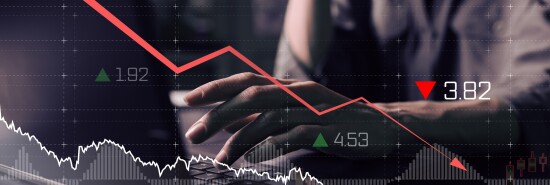
The paradox of progressive economics
Jack Elbaum
Video Embed
New data show high earners are fleeing New York and California for Florida and Texas.
The report from SmartAsset finds that Florida had a net gain of 27,567 high earners (namely, those who make more than $200,000) between 2020 and 2021, and Texas had a net gain of more than 9,000. It notes that, on the other hand, “California and New York lost more than 45,000 and 31,000 high-earning filers, respectively — more than any other state. California’s net outflow of high earners accelerated significantly (40%) from the previous year’s outflow.”
THE MIXED MESSAGES OF BIDENOMICS
This is consistent with data showing that in 2022, Florida enjoyed the most net domestic migration in the country (+318,000 people) and Texas had the second most (+230,000 people). Meanwhile, California lost more than 340,000 people in net domestic migration and New York lost almost 300,000.
But the fact these new numbers focus on high earners is also significant because it brings up what we ought to consider the paradox of progressive economic policy: it drives away the very people it relies on to pay for its programs.
In theory, it is a great thing to have the government guarantee jobs, housing, healthcare, and myriad other benefits for its citizens — particularly when this happens within the context of an already wealthy society. The issue is that, in order to make that happen, there must be sufficient revenue. Progressive economics insists that tax hikes are necessary. But these tax hikes are not just on income. They are on businesses, gas, consumption, hotels, and a million other things. Not only that, but other interventions, such as price controls on rent, need to happen.
It is tolerable if the progressive vision actually produces social cohesion and societal satisfaction. That’s one of the reasons the Scandinavian countries are not suffering the fate I am describing. But, invariably, and particularly in the U.S., it does not produce those outcomes. Government finds out it is not able to actually solve all of these problems through top-down action because unintended consequences are both inevitable and numerous.
CLICK HERE TO READ MORE FROM THE WASHINGTON EXAMINER
So what happens next? Those adversely affected by the policies, such as businesses and their owners, want to leave. High earners want to leave, too — and they can. But at this point, the state has already committed to providing benefits x, y, and z to the people. It will no longer be possible to pay them, though, if the people and entities that pay most of the tax revenue simply get up and leave. What ends up happening, in the end, is a hollowed-out state with significant liabilities but very few assets. It’s a recipe for economic disaster.
This is precisely the path states such as New York, California, Illinois, and many other hard-left states are on right now. There are hardly any red states that are losing people in this type of way. But losing more and more high earners every year is simply not sustainable. In the cases of the states mentioned above, they are also declining in total population. The reasons are explicitly economic. But as each person leaves, the economic conditions get worse — initiating a cycle that cannot end well.
Jack Elbaum is a summer 2023 Washington Examiner fellow.
